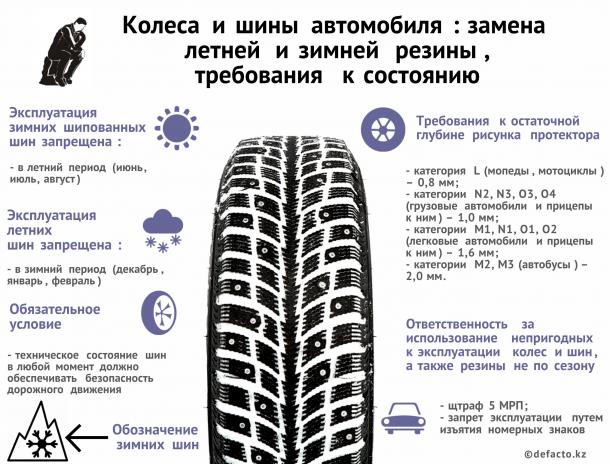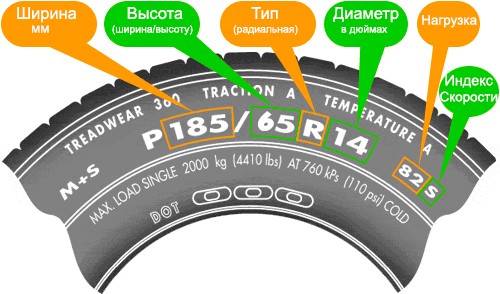
Tire marking - how to decipher it?
Content
- Tire designation - why is it worth knowing about these parameters?
- How do I read the tire size?
- Tire speed index
- Tire lettering
- Load index
- How to check the year of manufacture of a tire? Tires
- Summer, winter and all season tires - designation
- Tire characteristics according to UTQG designation
- Other relevant tire markings
- Marking new and retreaded tires
Tire designation - why is it worth knowing about these parameters?
205/45, 91T or R16 - each of these markings appears on car tires in a different configuration. Fans of low ground clearance often install tires with the lowest possible profile. There are also those who care about slower tread wear and good grip on wet surfaces. To find out if a particular option has the desired characteristics, you should familiarize yourself with the tire designation before buying. Only then will you know which model is right for your vehicle. Let's start with size.
How do I read the tire size?
This is by far the main size to look out for when buying tires. The full meaning of this tire designation is given by the formula: xxx/xx Rxx, where:
- the first three digits indicate the width of the tire;
- the next two are responsible for the profile height, expressed as a percentage. This is the ratio of the sidewall height of the tire to its width. It is always specified as a percentage, not in millimeters;
- the number following the "R" indicates the tire size in inches. It should be identical to the rim you are going to put the tire on.
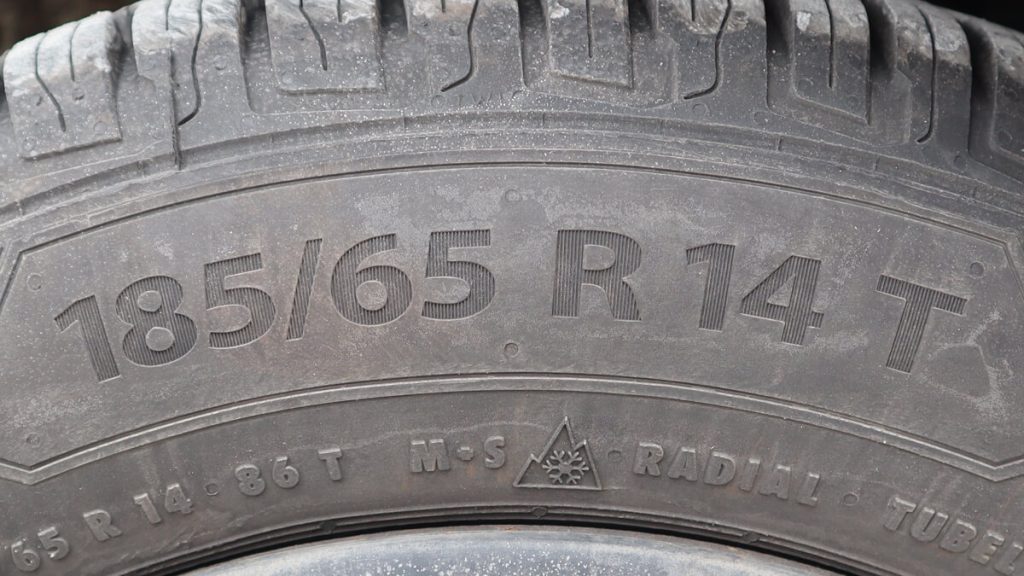
Remember that each car has its own preference set by the manufacturer regarding tire size. For example, on a car with factory R15 rims, you can even put "eighteen" tires, taking into account low-profile tires. However, ride comfort will leave much to be desired, and the suspension will also suffer greatly. But let's go further.
Tire speed index
You can find this value next to the tire size. It is the opposite of the corresponding rim size and starts with two numbers and ends with a letter. Just looking at the speed index won't do much. You still need to refer to these markings in the table explaining the entry. And here only the letter designation will be useful, because the meaning that precedes it means something completely different.
Tire lettering
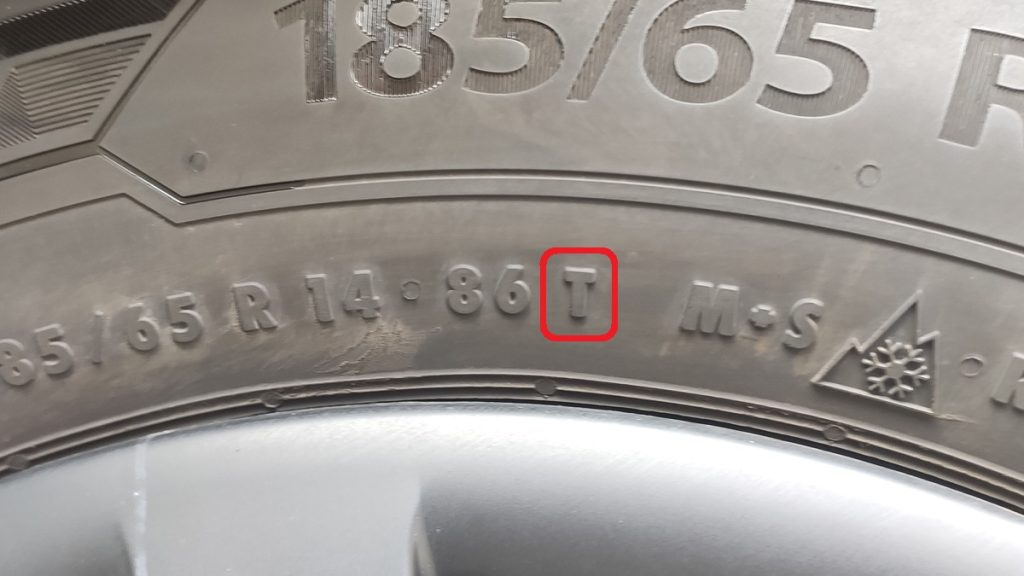
The division currently in use, most common in passenger cars, is in the range of letters "P" to "Y". Separate letter designations are deciphered below:
- R (150 km/h);
- Q (160 km/h);
- R (170 km/h);
- C (180 km/h);
- T (190 km/h);
- U (200 km/h);
- N (210 km/h);
- B (240 km/h);
- W (270 km/h);
- Y (300 km/h).
The lowest values are used in tires prepared for slow vehicles. The speed index at the end of the field is reserved for sports cars that develop the highest possible speed. However, the most common tire markings are "T", "U", and "H".
Load index
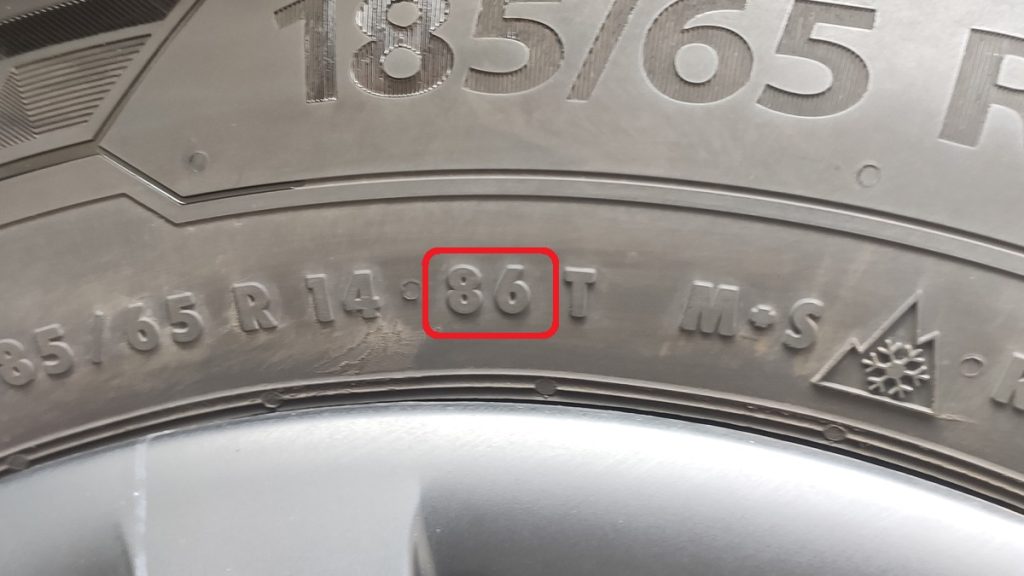
Since you are already at maximum tire speed, you are very close to the load index. This number, which precedes the letter, tells you the speed limit. Usually it is in the range from 61 to 114. The exact values \uXNUMXb\uXNUMXbcan be found in the manufacturers' catalogs.
For example, look at the commonly seen 92 marking on vehicles. It says that the pressure on the tire at full speed should not exceed 630 kg. By the marking itself, of course, you can’t calculate, you need to check with the manufacturer’s information. If you multiply this value by 4 wheels, then the resulting number will be slightly higher than the gross vehicle weight. You can find it in the registration document under the letter F1. It is important when buying never to choose those whose load index is lower than recommended by the manufacturer.
How to check the year of manufacture of a tire? Tires
Here it is worth staying longer. The DOT tire code consists of a sequence of 7 to 12 characters and numbers that indicate the production parameters of the tire. For example, the date of manufacture of a tire is at the very end of the DOT code. It is expressed in four numbers. It can be, for example, line 1109. How to decrypt it? The first two digits indicate the number of the production week. The next two are a year. Thus, this example shows that these tires were manufactured in the 11th week of 2009. That was a long time ago.
Another important information can be read by deciphering the marking on the tire preceding the week and year of its manufacture. This will be a four-character tire designation indicating where the tire was manufactured. The "EX" marking means that the tire is approved for use in all countries of the European Union. These parameters are not so important for everyone. However, if you are the kind of person who appreciates attention to detail, the tire's DOT code will certainly be of great importance to you.
Last year's DOT code - are these tires expired?
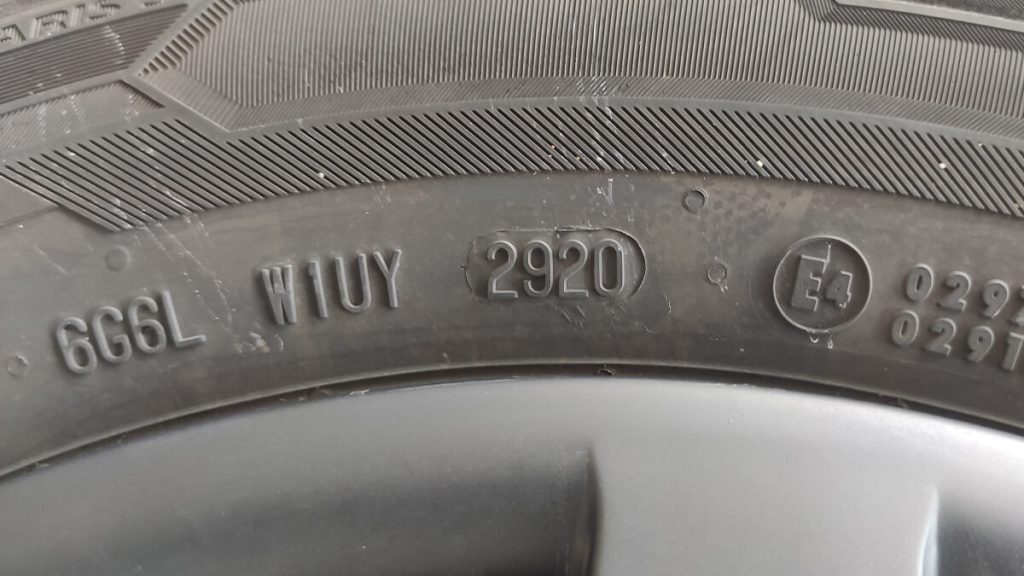
New tires don't always have to be made in the same year you're going to buy them. The law states that if not used and properly stored, they may be sold as new for 3 years from the date of manufacture. While new tires are easy to recognize, pay special attention to used items. They can be repaired, polished and shiny, but at the time of the crisis they completely fail. Look not only at the appearance, but also at the date of manufacture. How to check the year of manufacture of a tire? Find the DOT label.
Summer, winter and all season tires - designation
It has become common to say that MS tires stand for all-weather tires. Nothing else is wrong. This is just an abbreviation of the manufacturer, which, after decoding, sounds mud and snow, which in translation means simply mud and snow. It can be found on winter and all-season tires for cars and SUVs. In fact, this does not refer to the winter properties of the product, it is just a manufacturer's declaration.
So how do you know if it's a winter or all-season tire? It must be marked with the 3PMSF symbol. Graphically, it is a snowflake enclosed within a mountain with three peaks.
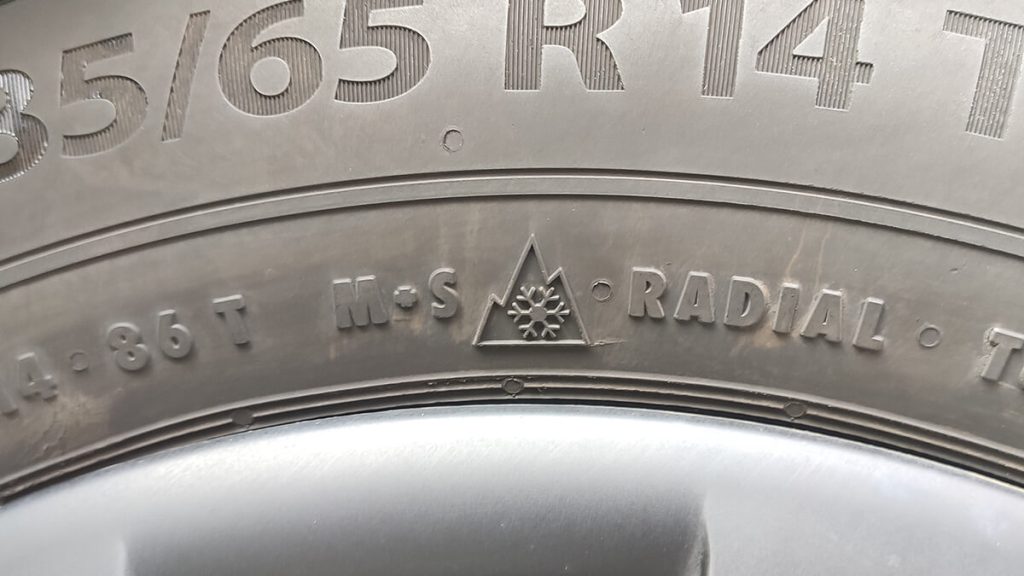
Only such marking of tires guarantees their winter suitability. The popular MSs bring nothing when it comes to driving in winter conditions.
Tire characteristics according to UTQG designation
Description of tire properties based on classification Uniform assessment of tire quality can often be found above the size of a given tire. It consists of three parameters. This designation is mostly relevant in American settings and not valid in Europe. However, it may give you some idea of the quality of the tire. The first one, that is sportswear indicates how much the tread is subject to abrasion. The higher the value, the slower the rubber wears. If your car has tires with a factor of 200, they will be less prone to wear than tires with a number of 100.
Another parameter that serves as a description of the capabilities of the bus is Traction. We are talking about grip on wet roads, tested when driving in a straight line. This is expressed in classes described by letters. For example, category AA is the highest degree of adhesion, and category C is the lowest acceptable.
The last parameter on this line Temperature. It measures the tire's ability to dissipate heat and resist overheating. Like the previous designation, it is expressed in letters, where A is the best class, and C is the worst.
UTQG measurement procedure
The whole process of parameter determination sportswear it all starts with ensuring the right test conditions. First of all, standardized tires are used for this purpose. The test tires are marked TW 100. They are installed on the car together with tires with an index. The distance to be overcome is more than 10 kilometers. After the trip we compare the consumption. If a tire with a wear index wears out twice as fast, it is labeled 2.
parameter Traction measured at a speed of 65 km/h. The car must have the ABS system turned off and, after accelerating to the set speed, it brakes on a straight road. After testing, the tires are assigned a letter designation. Overheat resistance Temperature measured in the laboratory. Tires accelerate to 185, 160 or 137 km/h. The speed is maintained for 30 minutes.
Other relevant tire markings
Of course, the tire markings listed above are not the only ones that can be found on a tire profile. They determine not only important production elements, but also tire properties that are important for many drivers. If you want to read them, read on!
BasePen
Electrostatic ground marking. Located in the tread, usually in the middle of the tire width, is a silica compound that is responsible for discharging electrical stress.
EMT (All Terrain Tire)
Reserved for high end products. The parameters of tires marked with this abbreviation indicate that it is still possible to drive a certain distance on a flat tire. A very useful feature that is not present in all types of tires.
Opposition z rantem FR
This feature means an additional layer of rubber that protects the rim from mechanical damage. This is especially useful for protecting against curb damage when parking. A very good option for those who often move around the city and have good expensive alloy wheels. A very similar indicator for onboard tires is the abbreviation MFS (Maximum Flange Shield), RFP (Rim fringe protection) i FP (Defender of the Fringe).
Reinforced tires Reinforced
The RF symbol classifies tires as reinforced and designed for vehicles with increased payload. It is characterized by an increased load capacity class per wheel, very often used in vans and trucks. Other symbols of this type are: EXL, RFD, REF, REINF.
Tire orientation
It is mainly used in models designed for winter, the tread of which determines the direction of rolling. It is marked with a very prominent inscription TURN, followed by an arrow indicating the direction of rotation. If there is such a tire marking, it must be strictly observed.
Symbol TWI – export indicator
The acronym comes from Tread wear indicator and this is the tire marking in the form of protrusions in the tread grooves. It is very useful for determining the mileage of a given tire and roughly characterizes the parameters of tires by their wear. 6 indicators should be visible around the perimeter, which are erased with use. If they are no longer visible, it is worth starting to be interested in buying new models.
Manufacturer's label
Since 2012, all tires manufactured after June 30, 2012 must have a manufacturer's sticker. It is usually placed on the tread of a given instance and describes several of the most important parameters. This includes:
- rolling resistance;
- radiated noise in decibels;
- wet clutch;
- size (for example, 205/45 R15);
- manufacturer's designation, for example, model name.
In addition, they show the most important characteristics of a given tire so that the buyer can quickly learn about the quality of the product.
Marking new and retreaded tires
Why are tires reclaimed and not recycled? First of all, you need to know that the wear part of the tires is only 20-30% of the total weight. The rest is a non-wearing carcass, i.e. body. The labeling of retreaded tires is no different from the standard methods for determining the date of manufacture of tires. Therefore, knowing the markings of new tires, you will know how to read the production of retreaded models.
How does the tire retreading process work?
Many drivers are skeptical about such products. In practice, however, the fact of using a completely new protector speaks in favor of their use. Of course, we are talking about the "cold" method, which involves gluing new rubber to the frame. The result is the creation of any tread pattern on almost any body. Importantly, the price of finished components can be up to 3 times lower than the cost of new tires.
Are retreaded tires durable?
And what about durability? The parameters of retreaded tires do not differ from new ones. However, their exact marking and purpose for the vehicle should be followed. The key here is the tread pattern, which must be properly matched to how the vehicle is used. Otherwise, the tire may wear out faster. If you decide on such tires, remember that you should not choose the cheapest options. Frequently used materials and production method leave much to be desired.
After reading this article about tires and tire markings, you know almost everything. It's no secret to you how to read tire sizes, how to determine their speed and load index. Of course, the next time you want to buy the right model, you will choose the right model for your car yourself. Remember that tires are the only element of the vehicle that connects it to the road surface. They are critical to your safety. So don't skimp on them. Even if you are buying used or refurbished products, read the specifications carefully beforehand. We wish you a wide road!
